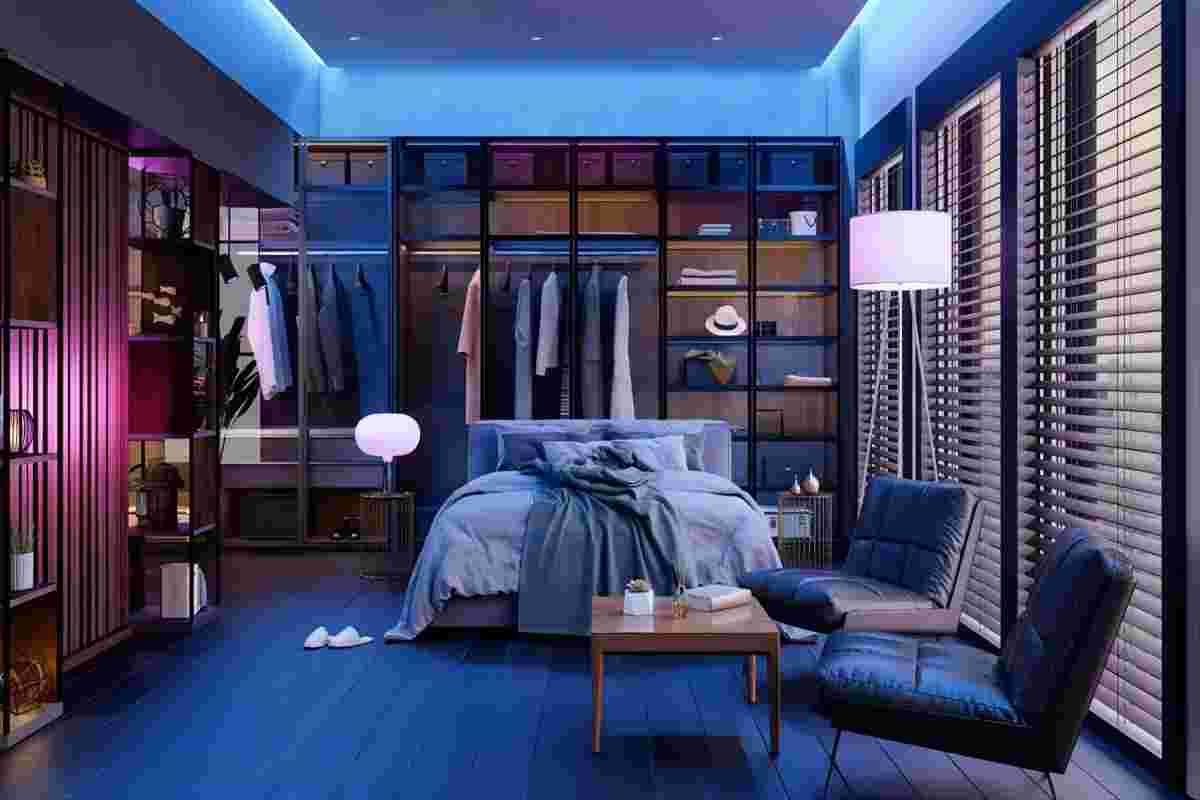LED lighting, which offers energy efficiency, adaptability, and customized options for a range of applications, has completely changed the way we light our spaces. With an emphasis on bedroom lighting, this article will examine LED technology's fundamental circuitry and useful uses in household lighting.
How to Intall Whole Room RFB LEDS
LED Wiring Diagram and Circuit
The light-emitting diode itself is the central component of LED technology. The fundamentals of LED wiring and circuits must be understood in order to fully comprehend how LEDs operate. Components of a typical LED circuit include the following:
- LED
- Power source (supply or battery)
- Resistor (for current limitation)
- Wire connections
The wiring diagram for LEDs is really straightforward:
- A current-limiting resistor is used to connect the LED's positive terminal, or anode, to the positive side of the power supply.
- The LED's negative terminal, or cathode, is directly connected to the power source's negative side.
This simple circuit makes sure the LED gets just the right amount of current to light up without getting damaged by too much voltage.
LED Symbol
The LED symbol appears in electrical diagrams as a diode symbol, which is a triangle pointing to a line with two arrows pointing away from it to indicate light emission. For an understanding of increasingly intricate LED circuit designs and schematics, this symbol is essential.
LED Lights for Room Illumination

LED lights are becoming more and more used for lighting rooms because of their longevity, energy efficiency, and adaptability. They can take many different shapes, such as:
- LED bulbs
- LED panels
- LED strips
- LED downlights
Each variety has special advantages and can be applied to provide various lighting effects in a space.
LED Light Strips for Room
LED light strips are becoming very popular for ambient lighting and interior décor. These flexible LED strips have a number of benefits.
- Simple installation: They are easily mounted and can be trimmed to size. They also frequently include an adhesive backing.
- Versatility: They can be used to produce a backlit effect behind TVs or furniture, accent lighting, or under-cabinet lighting.
- Color options: Since many LED strips are RGB capable, users can alter the color and mood of the strip.
- Dimmability: The majority of LED strips allow you to adjust the light's intensity.
When putting in LED light strips in a space, think about where to put them:
- Behind a headboard for a gentle, ambient glow
- Under kitchen cabinets for job lighting
- Along the perimeter of the ceiling for a cove lighting effect
- Around mirrors to improve aesthetics and visibility
LED Lights for Bedroom
Lighting is very important in the bedroom since it sets the mood for rest, reading, or getting ready for the day. The bedroom is a private place. The flexibility and control possibilities of LED lights make them especially ideal for bedroom lighting.
Best LED Lights for Bedroom
When choosing the best LED lights for a bedroom, consider the following options:
- Dimmable LED bulbs: These allow you to adjust the brightness to suit different activities and times of day.
- Color-changing LED bulbs: These can help create different moods and can be synced with your circadian rhythm to promote better sleep.
- LED strip lights: Perfect for creating ambient lighting or accent lighting around the room.
- LED bedside lamps: These provide focused light for reading while being energy-efficient.
- LED ceiling fixtures: For overall room illumination with the option to dim or change colors.
When selecting the best LED lights for your bedroom, consider factors such as:
- Color temperature: Warmer tones (2700K-3000K) are generally more relaxing for bedrooms.
- Brightness: Look for lights with adjustable brightness levels.
- Smart capabilities: Consider LED lights that can be controlled via smartphone apps or voice assistants for added convenience.
- Energy efficiency: Look for ENERGY STAR certified products for optimal energy savings.
Creating the Perfect Bedroom Ambiance with LED Lights
To create the ideal lighting setup in your bedroom using LED lights, consider the following tips:
- Layer your lighting: Combine ambient, task, and accent lighting for a well-rounded lighting scheme.
- Use dimmers: Install dimmer switches or use dimmable LED bulbs to adjust light levels throughout the day.
- Incorporate color: Use color-changing LEDs to set different moods or to align with your circadian rhythm.
- Consider light placement: Use bedside lamps for reading, under-bed LED strips for a soft nightlight effect, and ceiling fixtures for overall illumination.
- Experiment with LED strip placement: Try placing LED strips behind the headboard, along the baseboards, or around window frames for unique lighting effects.
- Use smart controls: Integrate your LED lights with smart home systems for easy control and automation.
Advanced LED Lighting Considerations
As LED technology continues to advance, there are several considerations for those looking to maximize the benefits of LED lighting in their homes:
- Smart LED systems: These allow for remote control, scheduling, and integration with other smart home devices.
- Tunable white LEDs: These lights can adjust their color temperature throughout the day to mimic natural light patterns, potentially improving sleep quality and overall well-being.
- Ultra-high CRI LEDs: High Color Rendering Index (CRI) LEDs provide more accurate color representation, which can be particularly important in bedrooms where you choose clothing or apply makeup.
- LED drivers and power supplies: For more complex LED setups, understanding the role of LED drivers and selecting the appropriate power supply is crucial for optimal performance and longevity.
- Heat management: While LEDs generate less heat than traditional bulbs, proper heat management is still important, especially in enclosed fixtures or for high-power LED systems.
Conclusion
LED lighting offers unparalleled control over the color, intensity, and distribution of light, revolutionizing the way we light our living areas. With the help of this technology, you can create the ideal lighting environment with a multitude of alternatives, from choosing the best LED lights for your bedroom to comprehending the fundamental LED circuit diagram.
Keep in mind to take into account aspects like color temperature, brightness, energy economy, and smart capabilities when you investigate LED lighting for your house. You may design a bedroom environment that is not only practical but also supportive of rest, productivity, and general well-being with the correct mix of LED lighting options.
Choosing the ideal bedside lamp for reading or installing LED strip lights for a contemporary ambient effect—LED technology provides the efficiency and flexibility to satisfy all of your lighting requirements. We can anticipate even more cutting-edge lighting solutions as LED technology develops further, which will improve our living areas and help create more comfortable, sustainable homes.
FAQ
1. Are LED lights good for a bedroom?
2. Can bedroom outlets and lights be on the same circuit?
3. How many LED ceiling lights are on one circuit?
In the United States, the NEC restricts a combined lighting and outlet circuit to a maximum of 12. As long as the total is less than 12, there might be 12 light fixtures and 0 receptacles, 6 light fixtures and 6 receptacles, or 0 light fixtures and 12 receptacles. The breaker needs to be 14AWG for 14A and 12AWG for 25A. It can be either 15A or 25A.

